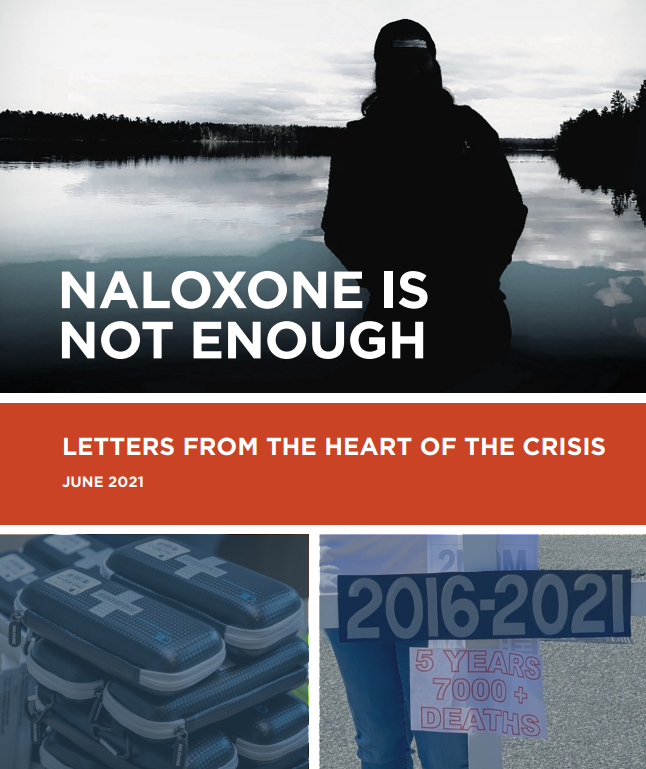Trouver une ressource
Consultez notre collection d’informations et de ressources organisées!
*Plus de ressources sont disponibles en anglais.

Snapshot: 3 Things to Know about iOAT
Fiche d’information/infographie
In the four years between 2016 and 2019, more than 15,400 people died from opioid use, making it the most enduring public health crises in recent Can…
Source: Addictions & Mental Health Ontario (AMHO)Format: PDF
Publié : 2021
Sujets : Approches axées sur l’équité, Pratiques exemplaires et lignes directrices, Substances spécifiques
Decriminalization Done Right: A Rights-Based Path for Drug Policy
Rapport
Punitive drug laws and policies purported to deter drug use have failed — and worse, they have done catastrophic harm. They have fueled deadly stigma…
Source: HIV Legal NetworkFormat: PDF
Publié : 2021
Sujets : Promotion de la santé, Décriminalisation
Supervised Consumption Services for Acute Care Hospital Patients
Article universitaire
Access to supervised consumption services is recommended across the treatment continuum for people with opioid use disorder. The hospital environment…
Source: Canadian Medical Association Journal (CMAJ)Format: PDF
Publié : 2020
Sujets : Réduction des méfaits, Sites de consommation supervisée
Supervised Consumption Services: The Basics
Article universitaire
Supervised consumption services (SCS) are an important health service designed to improve the health of people who use drugs. SCS are a core componen…
Source: WHY SCSFormat: PDF
Publié : 2021
Sujets : Réduction des méfaits, Sites de consommation supervisée
Myths & Facts About Supervised Consumption Services
Fiche d’information/infographie
Research shows that SCS can also help improve safety in the surrounding community, that they have no negative impacts on crime, and that they can hel…
Source: WHY SCSFormat: PDF
Publié : 2021
Sujets : Réduction des méfaits, Sites de consommation supervisée
This is Not Home: Project Summary
Rapport
This summary report outlines research activities and results, and includes recommendations for improving low-barrier, gender-focused drop-ins and for…
Source: Homeless HubFormat: PDF
Publié : 2021
Sujets : Réduction des méfaits, Logement, Déterminants de la santé, Approches tenant compte des traumatismes et de la violence subis et interventions fondées sur le genre, Populations spécifiques

This is Not Home: Fast Facts
Fiche d’information/infographie
This fact sheet describes barriers to housing and participant experiencies with housing and homelessness from This is Not Home (TINH) - a community-b…
Source: Homeless HubFormat: PDF
Publié : 2021
Sujets : Réduction des méfaits, Logement, Déterminants de la santé, Approches tenant compte des traumatismes et de la violence subis et interventions fondées sur le genre, Populations spécifiques

Overdose Prevention During a Pandemic
Rapport
As the COVID-19 pandemic continues to present new challenges, historic, and systemic oppressors experienced by PWUD have only become more exacerbated…
Source: Canadian Association of People who Use Drugs (CAPUD), Dalhousie University Faculty of MedicineFormat: PDF
Publié : 2021
Sujets : Réduction des méfaits, Renseignements généraux sur la réduction des méfaits

Sex, Gender & Cannabis: Pain and its Management
Fiche d’information/infographie
This information sheet offers a snapshot of how sex, gender and equity-related factors influence the
health effects of cannabis. It can be used…
Format: PDF
Publié : 2022
Sujets : Populations spécifiques, Substances spécifiques
Naloxone is Not Enough: Letters from the Heart of the Crisis
Rapport
The availability of naloxone as an emergency response intervention has been critical in saving lives. Modeling estimates that from January 2015 to Ma…
Source: BC Centre for Disease Control (BCCDC), Toward the HeartFormat: PDF
Publié : 2021
Sujets : Réduction de la stigmatisation, Témoignages et perspectives, Réduction des méfaits, Naloxone, Promotion de la santé, Politique en matière d’usage de substances

